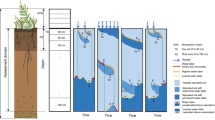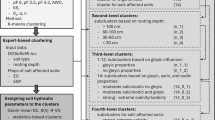Abstract
SOIL permeability or hydraulic conductivity is of great importance in the engineering design of foundations, dams, sub-surface drainage systems, irrigation systems, etc. In spite of its importance, soil hydraulic conductivity remains one of the most difficult of soil properties to assess. Laboratory methods have limitations due to the size of the samples. Considerable progress has been made in the development of methods for measuring soil hydraulic conductivity in the field when a water table is present. However, water tables are not always present in areas requiring seasonal drainage.
This is a preview of subscription content, access via your institution
Access options
Subscribe to this journal
Receive 51 print issues and online access
$199.00 per year
only $3.90 per issue
Buy this article
- Purchase on SpringerLink
- Instant access to full article PDF
Prices may be subject to local taxes which are calculated during checkout
Similar content being viewed by others

References
Luthin, J. N., and Kirkham, D., Soil Science, 68, 349 (1949).
Author information
Authors and Affiliations
Rights and permissions
About this article
Cite this article
LUTHIN, J. Method of measuring Soil Hydraulic Conductivity in situ. Nature 192, 383–384 (1961). https://doi.org/10.1038/192383a0
Issue date:
DOI: https://doi.org/10.1038/192383a0


